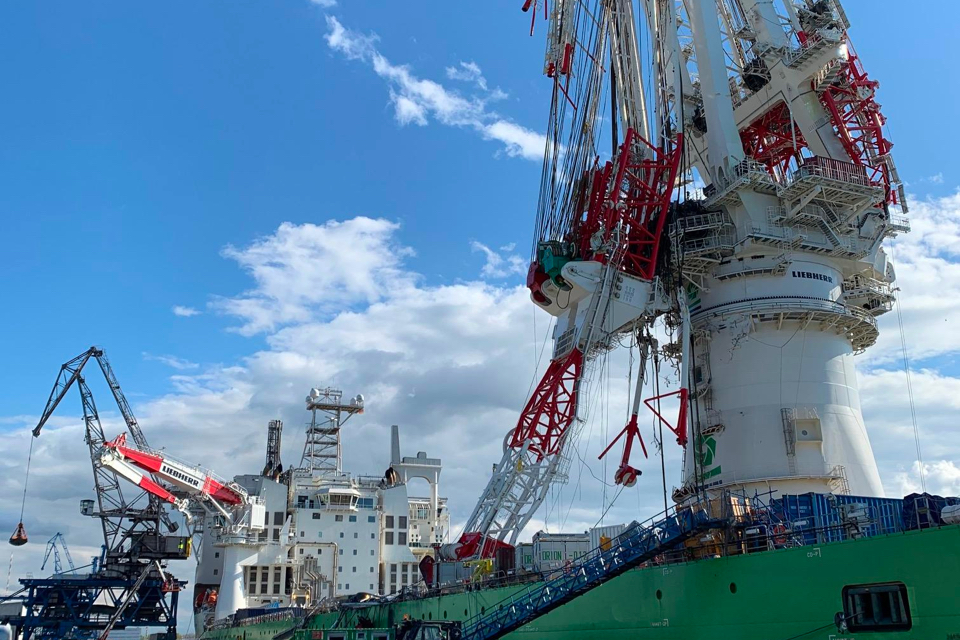Hook designer Ropeblock “appalled” by Orion accident

Ropeblock, the designer of the faulty crane hook that caused the Orion accident, says it is appalled by the incident and the impact it has on the industry. “Based on the information that is currently available, it seems that the hook’s stem broke, the company says in a statement.
Ropeblock designed the lifting blocks and crane hook for the MV Orion’s heavy-lift crane which collapsed on Saturday 2 May while performing load tests at Liebherr’s manufacturing facility in the port of Rostock.
The crane was to lift a pontoon weighing 5500 tonnes as part of an overload test but for reasons unknown, the crane’s hook failed at 2,600 tonnes causing the crane to swing back and eventually collapse. Twelve people sustained injuries in the accident and the crane and vessel have been heavily damaged.
“We are deeply moved by these events”, Ropeblock writes in a statement. “Our hearts go out to the wounded and all others involved in the accident. At the same time, we are appalled by the impact that this incident has on our customer Liebherr, but certainly also on the industry as a whole.”
The Dutch company says it provided the design of the crane’s lifting blocks and crane hook but outsourced manufacturing to “a certified supplier who is familiar with parts of similar and larger sizes”. Ropeblock adds that prior to manufacturing the design has been verified by the authorized body.
Preliminary investigation results show that the hook’s stem broke, but the exact cause and course of events need to be further investigated.
High profile accident
Liebherr has been unusually fast with the outing of the preliminary investigation results. In accidents like these, companies normally await the outcome of the final investigation report but in this particular case, Liebherr issued a statement with detailed information within days.
This is likely because Liebherr stands to lose more than just insurance claims. This is the company’s first-ever HLC295000 crane and it sees the manufacturer entering a new arena of super heavy-lift offshore cranes that is dominated by Huisman Equipment. Any sort of design flaw would be a major setback and harm the industry’s confidence in the product.
This explains why Liebherr was quick to communicate that the cause of the accident was a faulty hook purchased from an external supplier. In its statement, the crane manufacturer explicitly states that “a design or production error of the Liebherr crane can therefore be excluded.”
Another likely reason is that this is the second accident at Liebherr’s Rostock facility in a short amount of time. In February, two mobile harbour cranes destined for export fell from the heavy-lift vessel Jumbo Vision into the port basin during loading operations. The cause of this accident has not yet been revealed. Eyewitnesses said the mobile cranes came into contact the vessel’s own cranes causing the ship to list, but this has been disputed by Jumbo Shipping, which says there is no evidence that supports this claim.
DEME
The accident aboard the MV Orion happened in the final test phase of the crane, shortly before delivery of the vessel to DEME. The offshore installation vessel was scheduled to be delivered in the second half of May. It was lined up to start works on the Moray East offshore wind farm in the UK, where DEME is to install 103 jackets starting in July. Considering the damage of the crane and vessel, however, the Orion will not be finished in time.
“We are currently searching for a new vessel to install the jackets”, spokesperson Vicky Cosemans of Deme tells PCJ. “This could be one of our own vessels or a vessel chartered from another company.” DEME confirms that the initial investigation shows the hook as the cause of the accident, but adds that further investigation into the accident is needed.
You just read one of our premium articles free of charge
Want full access? Take advantage of our exclusive offer




